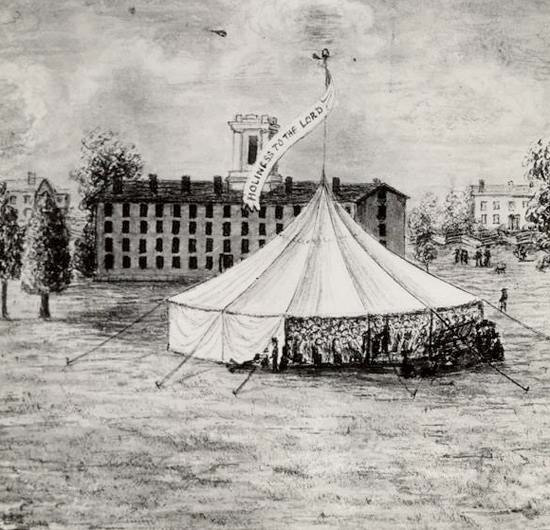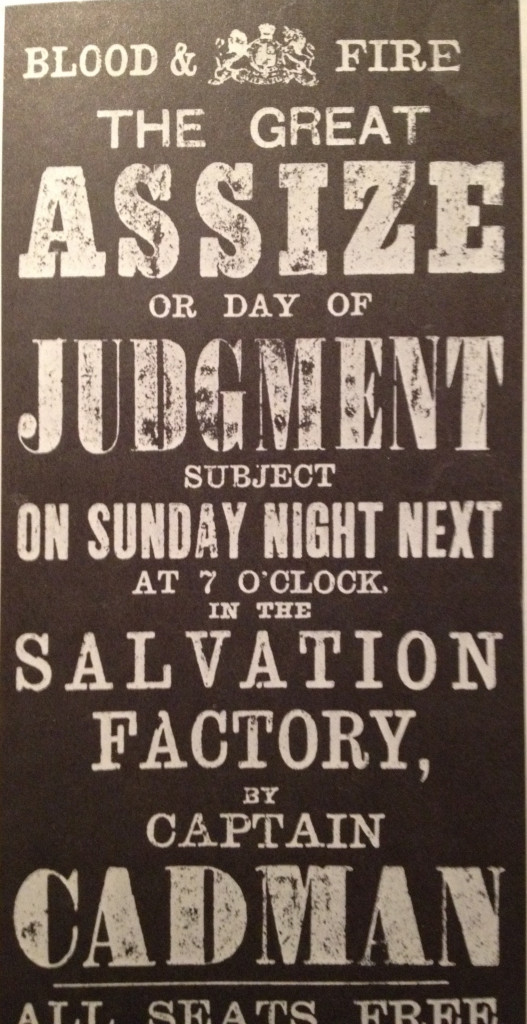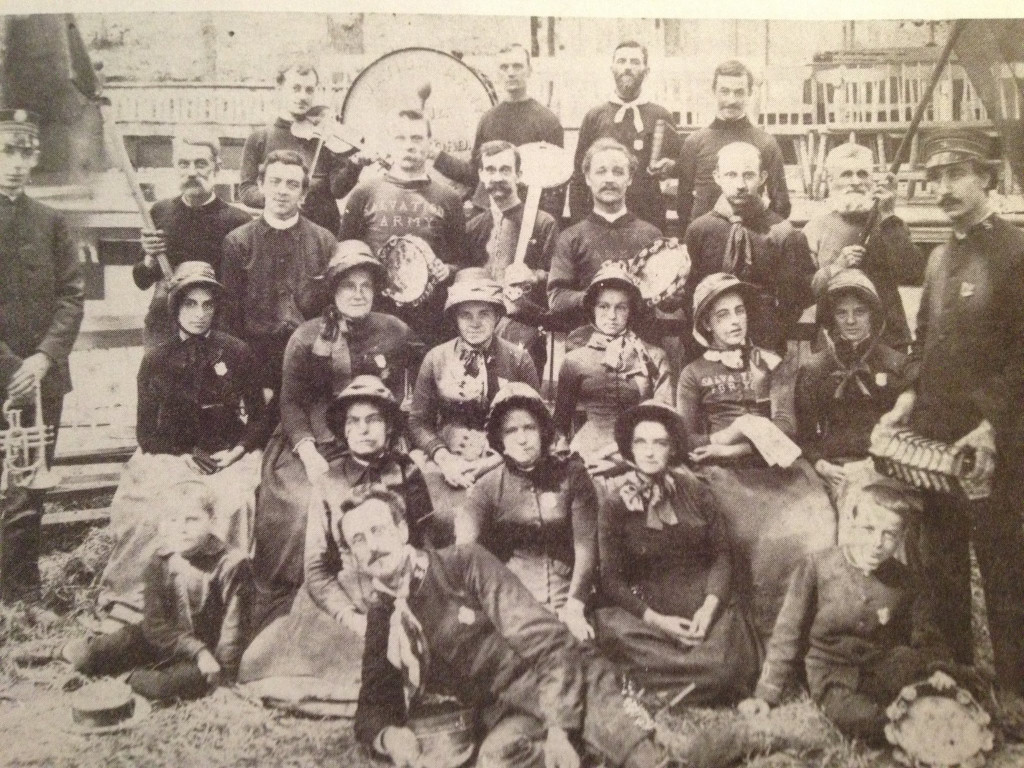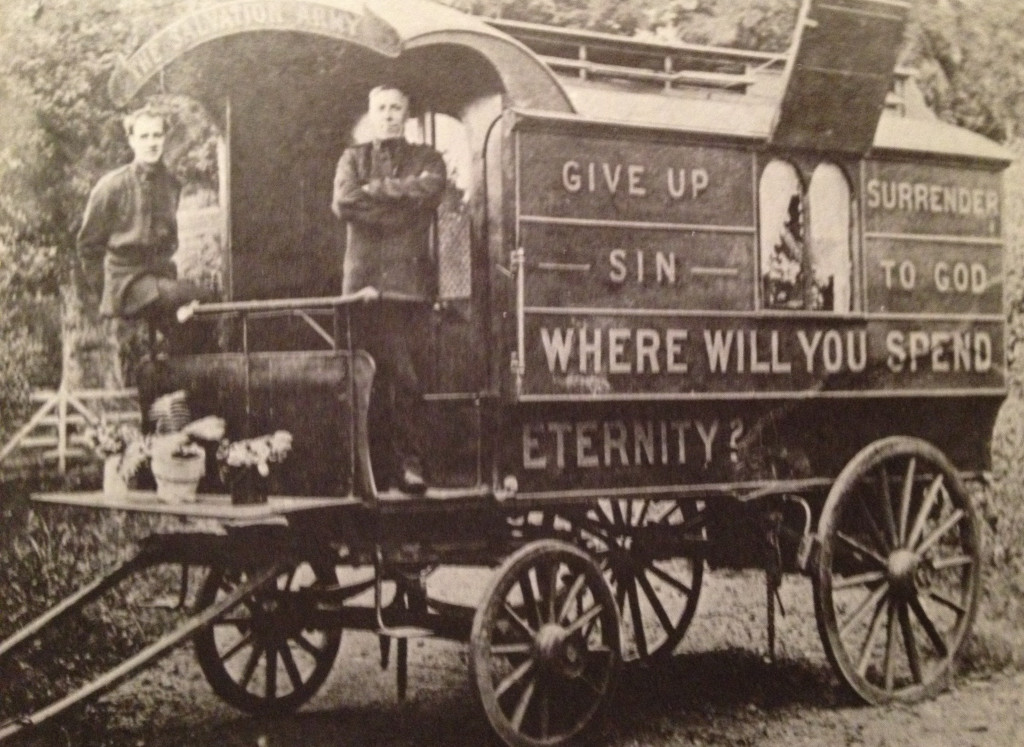“I am sending you off to open the eyes of the outsiders
so they can see the difference between darkness and light, and choose light,
see the difference between Satan and God, and choose God.
I’m sending you off to present my offer of sins forgiven, and a place in the family,
inviting them into the company of those who begin real living by believing in me.”
— Acts 26:17-18 —
“The great battles of the future will be fought in the open-air.
If the people will not come to us,
the greater is the necessity and urgency that will be laid upon us to go to them.
And to them we Salvationists must and will go.”
— William Booth —
Beach Mission
In July, 1885 in Old Orchard Beach, Maine; The Salvation Army began their annual Camp Meetings. It is inspiring to see that they were active in evangelism at the Pier from their first year. Here is Marjorie Hartman Scott’s account of their campaign:
“A daily feature of the camp meetings was the open-air meetings in front of the big hotels, on the beach, and at the railway station, where the antics of the Salvationists were regarded with amusement by the summer visitors. They knelt in the sands to pray, their boots almost lapped by the sea. They prayed, preached, testified and marched to an from the open air meetings flying their flags, playing their tambourines, and stirring up the dust of the unpaved roads. They were demonstrative, unrestrained, joyous Salvationists, young in The Lord and in The Salvation Army… The War Cry of August 15, 1885 headlined, “THE CAMP MEETING AT OLD ORCHARD, Great Tidal Wave of Salvation. Backsliders returning. Wonderful! Wonderful! Wonderful!”
The inspiration for this 19th century beach evangelism wasn’t anything unique in The Salvation Army as this was foundational to what was then known as “Salvationism” – an expression of Christianity that was centered upon the proclamation of the gospel of salvation through Jesus Christ alone.
William Booth has always stood out in Church history as an innovator in mission. In his ground-breaking publication from 1872, How to Reach the Masses with the Gospel, he states that:
Our purpose is to go out into the highways and hedges, and bring in the thousands who at present seem to be outside of the pale of all religious influence and operation; who, if not positively and bitterly opposed to Christianity; are totally indifferent to it. In the East of London there are multitudes in the grossest heathen darkness, being not only without God, but also without any knowledge of Him, or the way of salvation by faith in Jesus Christ. Turn which way you will, you may walk for miles, and everywhere you will find a dense population given up to all kinds of wickedness… Satan seems to have his seat, and to reign comparatively undisturbed, keeping his goods in peace. The Sabbath is regarded as a day of pleasure, idleness, or business. The falsest notions of God, religion, and a future state prevail; consequently misery abounds, sin is practiced, and vice is rampant everywhere. In the very center of this ocean of depravity and wretchedness, the Christian Mission has its headquarters, and to win these multitudes from the gin palace, the theatre, the concert hall, and the infidel lecture room, to Christ and usefulness and heaven, is its special work. (Booth, How to Reach the Masses, 1872: p.6)
Twenty years later, William Booth emphasized that the gospel must be adapted to the people we are seeking to reach:
“Supposing that the bulk or any considerable proportion of your audience is composed of unconverted people, your subject must be adapted to them. Nay, if any considerable number consists of the unsaved, you will give them the preference.” (William Booth, How to Preach).
Innovation in Tradition
Any exploration of Salvation Army history immediately reveals that there is nothing conventional about our heritage. We firmly believe that all great innovation is rooted in a rich knowledge of the identity and history of our Movement. Creativity has been a defining feature of Salvationism since its’ inception. From the lessons of our forefathers and mothers, we gained inspiration for how to re-imagine mass evangelism:
- In January, 1859, when the Booths served the Lord in the Methodist New Connexion, they named their ministry in Gateshead, England, “The Converting Shop”
- In 1863 in the Black Country of northern England, the Booths viewed a circus that had been converted into an evangelistic tent. They began to incorporate circus advertising into their revival services and developed a “Hallelujah Band” of ex-criminals, drunkards and notorious celebrities, all of whom were gloriously saved. The promotion focused on the sensation of their past lives, using their past infamy as a means to capture the attention of the masses
- Their use of dramatic and emotive storytelling was inspired by the American evangelist, James Caughey. This was perfected by William Booth, who illustrated in his own ministry the use of vivid metaphors from popular culture to capture and hold the attention of the masses. This strategy was encouraged by Salvationists around the world.
- In 1865, outside the Blind Beggar, one of many notorious ‘public houses’ in East London, Booth led tent meetings in a part of town where it was almost impossible to share the gospel. Breaking through drunken interruptions in the open air, he connected the gospel to the teeming masses, capturing their attention to save their souls.
The use of Penny Gaffs, Music Halls and Circuses were innovations inspired by the experimentation of revivalism and the home mission movement that expanded John Wesley’s open air ministry to reclaim the most secular spaces as sacred ground. Methodists of the day thought the Booths were crazy, but they were willing to be “fools for Christ” and to be looked on with derision and mockery if it would result in the salvation of the whosoever.
This spirit of innovation driven by the desire to induce or accelerate the process of a person being truly saved fueled a wide range of creative strategies for evangelism.
- The innovative methodology of quick testimonies and ten-minute open airs were standardized as common Salvationist methodology in William Booth’s 1872 publication, “How to Reach the Masses”
- The introduction of brass bands — the renegade music of the anarchic masses of the industrial revolution; and the re-appropriation of the most profane songs of the nation into salvation messages allowed the message to get into the psycho-social bloodstream of popular culture

- Capturing and recording converts and the intentional pursuit of ‘guarding’ those who have joined the ‘company’ of new believers was a definite means to ensure that those conversions were not temporary, but truly transformational
- The dramatic promotion of signage to attract attention – sparking curiosity, inquiry and building hype was mastered by Booth’s innovation genius, Elijah Cadman
- The employment of artists to draw images of ministry and mission was common practice
- The “War Chariot” was introduced by Cadman — when realizing his need to overcome his own lack of height meant that the development of a mobile platform that was placated with billboard promotionals would draw a crowd a help him ‘stage’ a gospel demonstration
- The training and equipping of every Salvationist, from children to adults, from women to men, from every tribe and language, from introvert to extrovert — the Booths realized that evangelism was not conducted by a singular personality, but through a mass diversity of personalities, all of whom were equipped to lead people to Christ
- The simplification of the process of conversion down to seven simple steps, helped to take rich theological and reduce it down to its most simple, but logically consistent steps so that a child, the simple and unschooled masses — along with the most intellectual, wealthy and powerful — could all understand and experience the transformation of conversion
- The adaptation of the American Frontier, New Measures Revivalist use of the ‘anxious seat’, which was already controversial amongst Methodists in England, and taking it a step further by laying down a drum on the street corner, was a bold step in church history beyond the trappings of Christendom which created barriers for the masses to experience the forgiveness of sin. Our cathedral was the open air. Our altar was crafted from the popular skin of the common drum.
- The ‘Pied Piper’ strategy of marches not only went to where the people were, but also led them to new places and new opportunities to find hope, deliverance, purpose and salvation
- The decorative use of banners, flags and costumes captured the attention and imagination of the masses — the first principle that Booth said was key to gaining confidence and saving souls
- The use of games, play and songs were used in the Children’s Mission. Outings to the beach presented opportunities to plant the seeds of the gospel to help us claim the moral and spiritual futures of new generations. Herbert Booth would even publish an entire book on how to use toys to talk about the gospel!
- The use of humor and laughter were such common features of Salvationist ministry that Bramwell Booth and Samuel Logan Brengle were collaborating on publishing a book on the use of humor in ministry
- The imagery of the Lighthouse and people drowning in an ocean gave a concrete sense of urgency behind their tactics in the marketplace. This wasn’t something that could be engaged casually, it required intentionality, tenacity, a daring spirit, a willingness to embrace criticism, accusation and persecution — a recognition that if there was a price to pay for proclaiming the gospel, that this was a small token compared to the price which Jesus paid for the forgiveness of the sins of all of humanity
- The publication of our own newspapers (both The War Cry and The Little Soldier), meant that salvation was always in the headlines — and localized to the personal testimonies of new converts in the neighborhood
- The transformation of ‘The Christian Mission’ into ‘The Salvation Army’ meant the introduction of crystal clear imagery that every evangelist was a real soldier in a real Army fighting in a real spiritual war against a real enemy to save people from a real Hell! While many of the innovative strategies in evangelism might have appeared like ‘gimmicks’ to church leaders of the day, the Booths realized, and defended with masterful rhetoric, that we were not ‘playing toy soldiers.’
David Rightmire has accurately noted that, “Innovation seems to be a mark of the Army’s early history, as it responded to human need in dramatic and bold ways. The Booths creatively adapted the gospel to the needs of the poor, breaking down the secular/sacred distinction prevalent in their day…” (Sacraments and The Salvation Army)
As we look to the next 150 years of ministry, it is our prayer that this spirit of innovative evangelism will continue to spark new creative expressions of Salvationism for the 21st century masses who so desperately need to hear the gospel message.
 Salvation Factory An Imaginarium Focusing on Research, Development and Design of Resources.
Salvation Factory An Imaginarium Focusing on Research, Development and Design of Resources.

